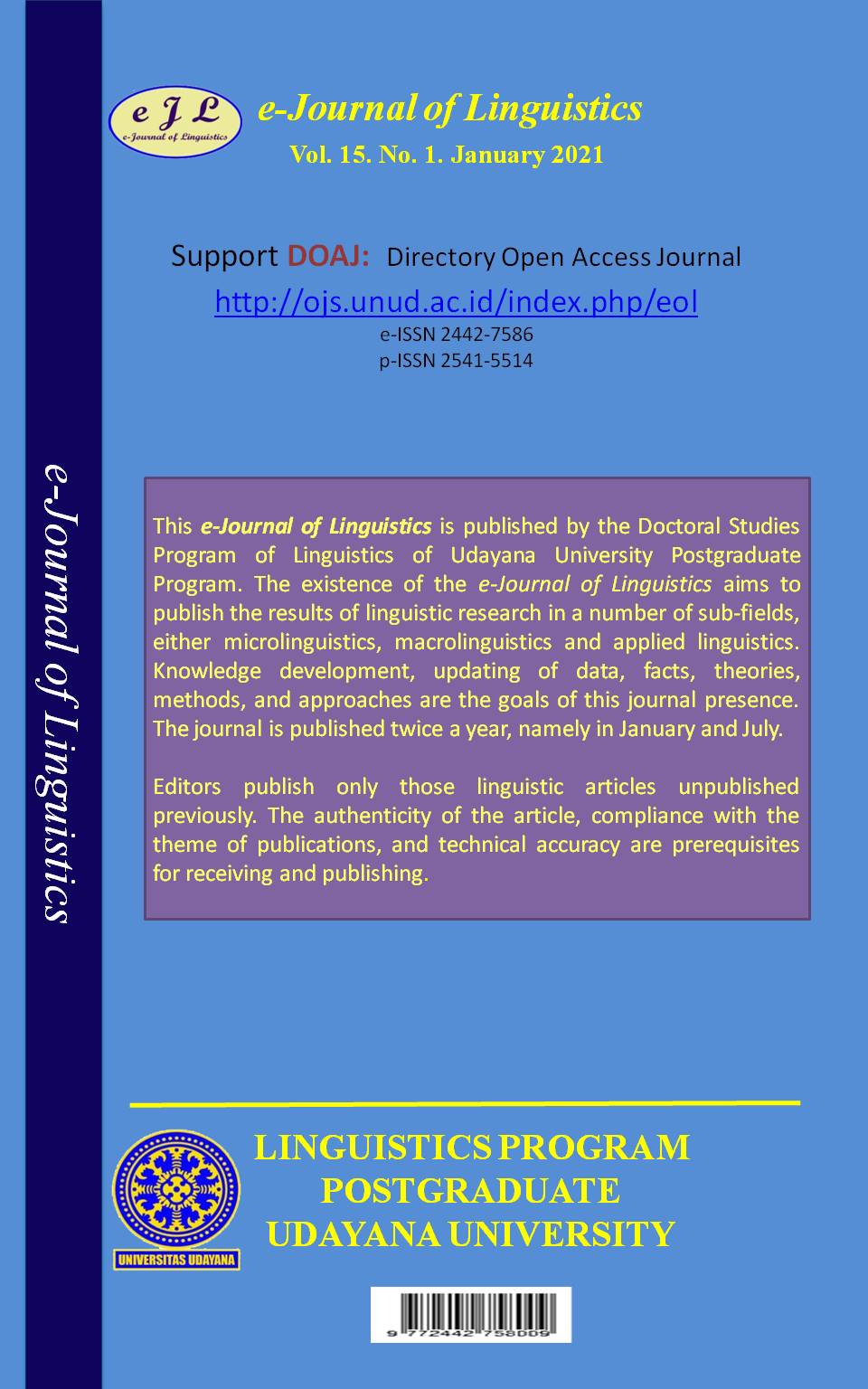Ecolinguistic Approaches in Development of English Teaching Materials for English for Business
Abstract
This study aims at finding an English learning model using an ecolinguistic approach in the preparation of syllabus and teaching materials. Qualitative descriptive methods are applied and natural phenomena are used to develop syllabus. This phenomenon focuses on learning and teaching strategies that are applied. Data obtained through tests, questionnaires and direct observation for needs analysis. The syllabus was developed based on the results of material analysis and needs.The ecological approach in education has the aim to preserve nature and its contents by building an environmentally friendly character. From this rationale, the ecological approach in language education has a number of characters that are used to find new ways to be applied to language learning. The result of the study shows that teaching materials have met the characteristics of the ecolinguistic approach, namely: relations, context, patterns / systems, emergence, quality, value, critical, variability, diversity, and activity. These characteristics are used as a theoretical basis for this research.
Downloads
References
Hutchinson, T., & Waters, A. (1987). English for specific purposes. Cambridge university press.
van Lier, Leo. (2004). The Ecology and Semiotics of Language Learning. A Sociocultural Perspective. Kluwer Academis Publishers. Borton.
van Lier, Leo. (2010). “The Ecology of Language Learning: Practice to Theory Theory to Practice”. Procedia – Social and Behavioral Sciences, 3 (2-6), 1276-1284, doi:10.1016j. sbpro.2010.07.005 https://books.google.co.id/books?id=HkqSCgAAQBAJ&pg=PA84&lpg=PA84&dq=procedia+social+and+behavioral+sciences+3+(2010)+26&source=bl&ots=adqF9vVhCi&sig=HXeVp
Miles, M. B. & Huberman, M. (1992). Analisis Data Kualitatif. Jakarta: Penerbit Universitas Indonesia
Tjendani, E.N.(2017). Ecolinguistics Approach for English Learning Activities at Junior HighSchool. Article Date Published : 30 August 2017 | Page No.: 3865-3772 | Google Scholar

This work is licensed under a Creative Commons Attribution 4.0 International License











